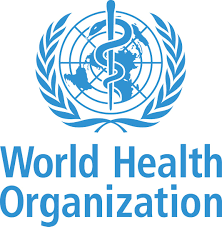Almost half of all deaths now have a recorded cause, WHO data sho17 MAY 2017 |
 GENEVA – Almost half of all deaths globally are now recorded with a cause, new data from the World Health Organization show, highlighting improvements countries have made on collecting vital statistics and monitoring progress towards the Sustainable Development Goals (SDGs).
GENEVA – Almost half of all deaths globally are now recorded with a cause, new data from the World Health Organization show, highlighting improvements countries have made on collecting vital statistics and monitoring progress towards the Sustainable Development Goals (SDGs).
Of the estimated 56 million deaths globally in 2015, 27 million were registered with a cause of death, according to WHO’s annual World Health Statistics. In 2005, only about a third of deaths had a recorded cause. Several countries have made significant strides towards strengthening the data they collect, including China, Turkey and the Islamic Republic of Iran, where 90% of deaths are now recorded with detailed cause-of-death information, compared with 5% in 1999.
Incomplete or incorrect information on those deaths that are registered also reduce the usefulness of those data for tracking public health trends, planning measures to improve health, and evaluating whether policies are working.
“If countries don’t know what makes people get sick and die, it’s a lot harder to know what to do about it,” said Dr Marie-Paule Kieny, WHO Assistant Director-General for Health Systems and Innovation. “WHO is working with countries to strengthen health information systems and to enable them to better track progress towards the Sustainable Development Goals.”
The World Health Statistics, one of WHO’s annual flagship publications, compiles data from the organization’s 194 Member States on 21 health-related SDG targets, providing a snapshot of both gains and threats to the health of the world’s people. While the quality of health data has improved significantly in recent years, many countries still do not routinely collect high-quality data to monitor health-related SDG indicators.
The report includes new data on progress towards universal health coverage. Those data show that globally, ten measures of essential health service coverage have improved since 2000. Coverage of treatment for HIV and bed nets to prevent malaria have increased the most, from very low levels in 2000. Steady increases have also been seen in access to antenatal care and improved sanitation, while gains in routine child immunization coverage from 2000 to 2010 slowed somewhat between 2010 and 2015.
Access to services is just one dimension of universal health coverage; how much people pay out of their own pockets for those services is the other. The most recent data from 117 countries show that an average of 9.3% of people in each country spend more than 10% of their household budget on health care, a level of spending that is likely to expose a household to financial hardship.
A selection of data on progress towards the health-related SDG targets is available here:
http://www.who.int/mediacentre/news/releases/2017/half-deaths-recorded/en/
Note to editors
Published every year since 2005, WHO’s “World Health Statistics” is the definitive source of information on the health of the world’s people. It contains data from 194 countries on progress towards the health-related Sustainable Development Goals, including a range of mortality, disease and health system indicators, including life expectancy, illness and death from key diseases, health services and treatments, financial investment in health, and risk factors and behaviours that affect health. WHO’s Global Health Observatory updates health statistics year round of more than 1000 health indicators. Members of the public can use it to find the latest health statistics at global, regional and country levels.
